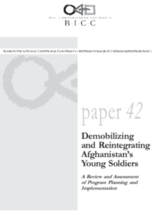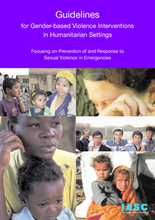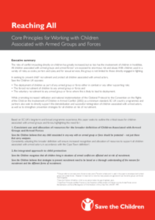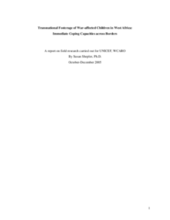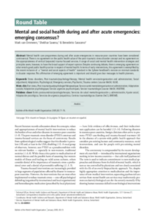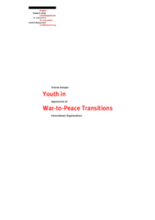Displaying 461 - 470 of 526
Examines the planning, coordination, and early implementation of UNICEF’s programme to demobilize and reintegrate war-affected youth in the context of Afghanistan’s reconstruction process.
Comprehensive guidelines for dealing with the planning, establishment, and coordination of multisectoral interventions to prevent and respond to sexual and gender-based violence.
Outlines the critical issues for children associated with armed conflict. Includes recommended strategies for preventing child recruitment and promoting reintegration.
A research study conducted with refugee children from Côte d’Ivoire and Liberia, and their foster caregivers in rural Guinea. Explores the experiences of both children and foster caregivers, and examines the role of ethnicity, gender and education. Highlights the significant capacity of a community to provide protection and care of refugee children, and offers recommendation for future research and programming.
Training manual for a three-day course (targeted at care workers) on domestic violence. Focus on empowering battered women to find safety and regain control.
A summary of the debate on the value of PTSD and trauma-focused care during and after acute emergencies. Argues for and outlines distinct intervention strategies to be considered for acute emergency and post-emergency phases.
This module is designed to increase field staff awareness, knowledge, and understanding on gender-based violence (GBV) and aims ultimately to contribute to the effective protection of refugees and internally displaced persons (IDPs).
This study explores four guiding questions: First, what approaches have international organizations developed regarding youth? Second, on which assumptions about youth and their role in violent conflicts are they based? Third, how do the different approaches affect program development, and, fourth, are they are compatible?
Concise guide designed to aid the implementation of best practice principles concerning the disarmament, demobilization, and reintegration of child soldiers. Includes a risk-analysis matrix and a results-based grid for programme proposal evaluations.
A research study which explores strategies used by children, families and communities to prevent child recruitment into armed forces.

